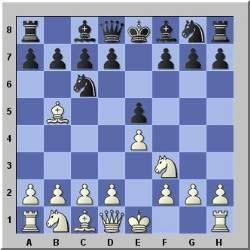
My First Opinions of Grandmaster Repertoire 13, The Open Spanish
I'll be the first to admit that I am probably not the most trustworthy person to write a first impressions of a book in the Grandmaster Repertoire series, but I just had to talk about this book after getting it just yesterday. Now, I love Quality Chess. I have several of those books and I just adore the Grandmaster Repertoire series. When one of these books come out, I find my friends and opponents preparing against these books! That's something to be noteworthy of. Grandmaster Repertoire 13, The Open Spanish is no different, it is a great book that fills the hole in Open Spanish book coverage these days.
Now, what makes this book good? Well, straight from the getgo of the preface, the reader can really tell that Mikhalevski has a very deep and good relationship with this opening. It only serves to create a better atmosphere from what I have seen. The second thing that's great, and the one that realy caught my eye, is how all of white's best moves in the middlegames are given. Many books these days are rather lopsided and don't give good options for the opponents, making them rather obsolete when one reccomended line is totally bad. Mikhalevski seems to avoid this, even admitting at times that white may have some pressure in a main line. It's not too hard to find moves by white that get an exclam from Mikhalevski The lack of bias in this book makes it very strong indeed.
Immediately after I got the book, I flipped to the page with the main line 1.e4, e5 2.Nf3, Nc6 3.Bb5, a6 4.Ba4, Nf6 5.0-0, Nxe4 6.d4, b5 7.Bb3, d5 8.dxe5, Be6 9.c3, where I was happy to find 9...Bc5 reccomended, which I have known for a while now.
After 10.Nbd2, 0-0 11.Bc2, I was sort of expecting the Dilworth Attack with 11...Nxf2, which although has quite a bit of theory attached with it, could be rather well covered in detail in this particular book. Instead, I found 11...Bf5, a move I hadn't really looked at before, but now I find to be quite reliable after breezing over the analysis.
Now, I probably shouldn't spoil anything else, but I will say that Mikhalevski's reccomendation against 9.Nbd2, the line which has been in fashion for the last few years, is very interesting and deserves study.
If one flips back to the table of contents, they will find that there are nearly 200 pages dedicated to the black side of the Open Spanish, but there are also about 140 dedicated to any of white's fifth moves after 1.e4, e5 2.Nf3, Nc6 3.Bb5, a6 4.Ba4, Nf6. One of the pesky ones these days 5.d3, is covered with a system that I am particularly liking that employs an active development of black's dark squared bishop, something these white players don't see too often.
If there's one fault I can say about this book, it's that there's no coverage of the exchange variation (1.e4, e5 2.Nf3, Nc6 3.Bb5, a6 4.Bxc6), but that really isn't a big deal. All Ruy Lopez books giving repertoires for black cover a line, and I personally like 4...dxc6 5.0-0, Bg4, reccomended by Kaufman. The good side to this is that there is more great coverage on the Open Variation!
Overall, my first impressions gives me the idea that this is yet another great book from Quality Chess and Mikhalevski. It's very unbias and will be the pinnacle of Open Spansih Theory for years to come from what I have seen. This one is definitely worth a buy!
